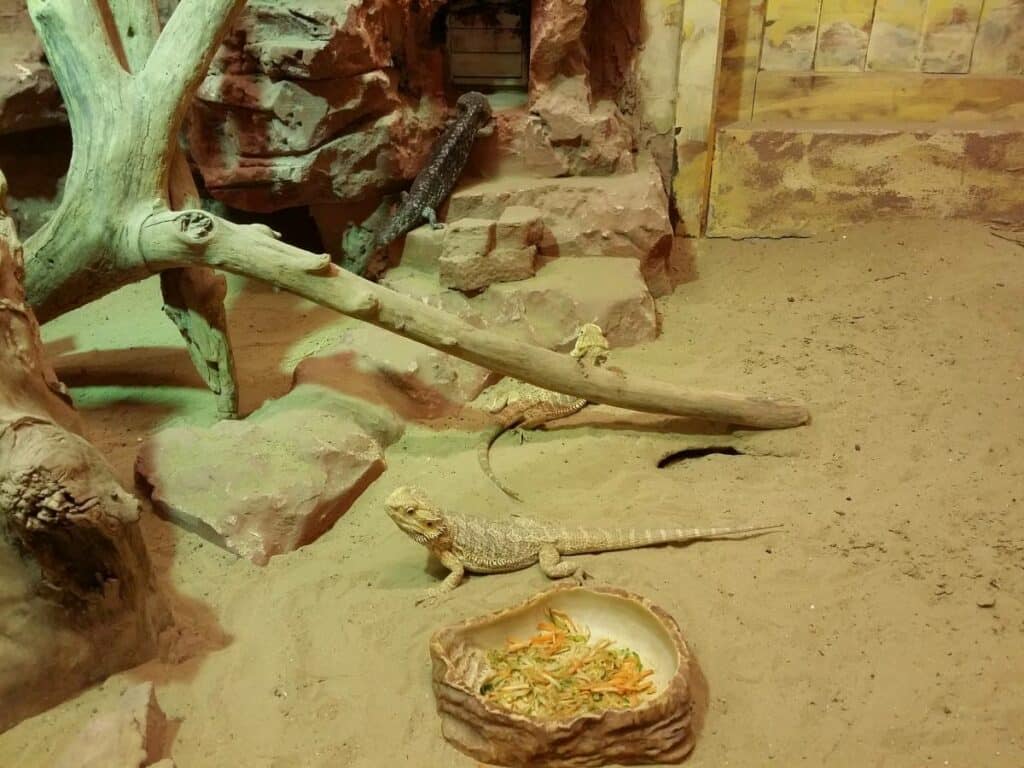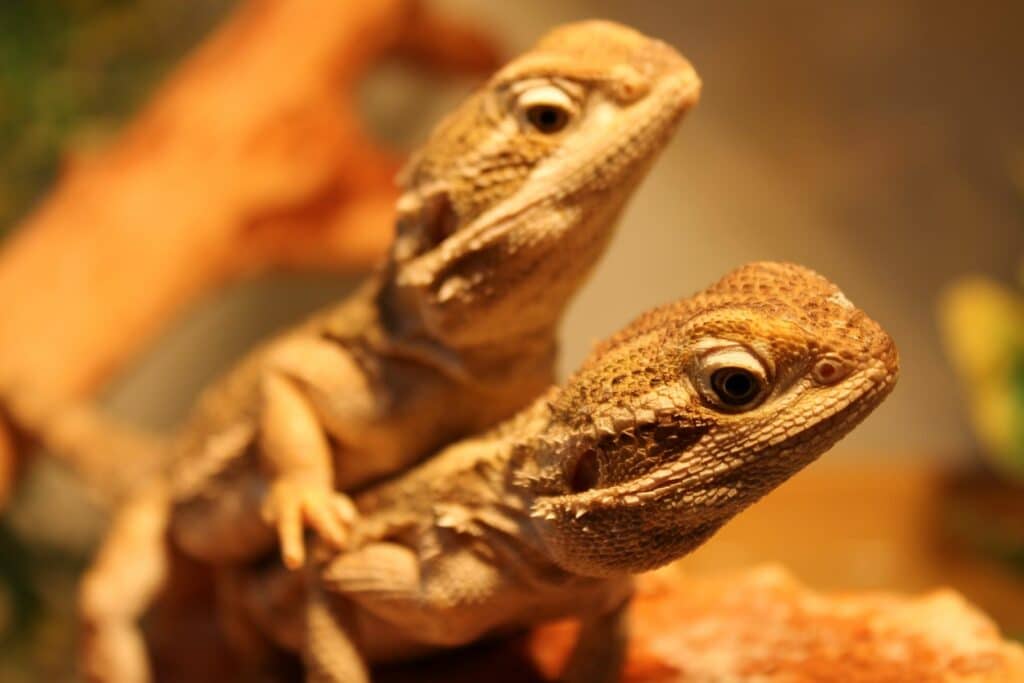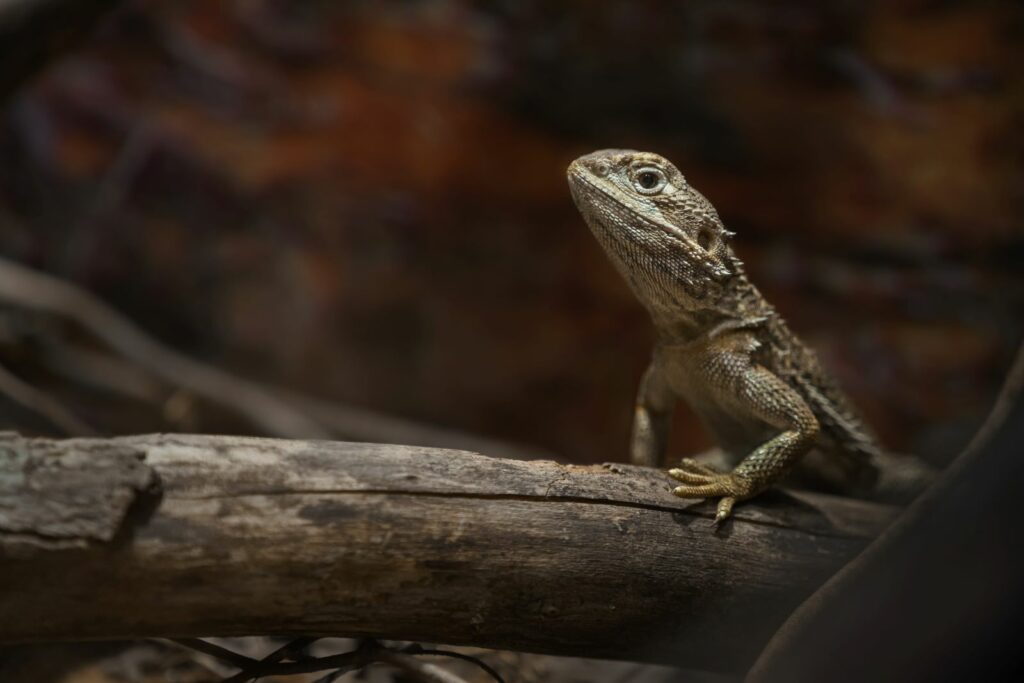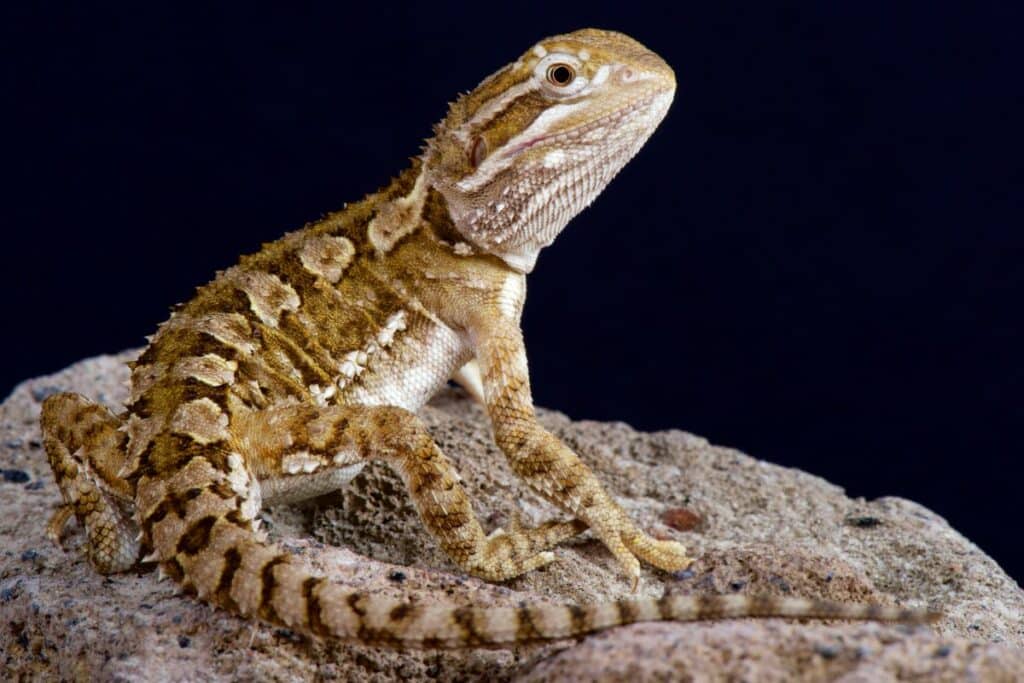the essentials in brief
In a large terrarium you can keep one to four bearded dragons - but only one male.
Two bearded dragons need a terrarium with dimensions of 120x60x60 cm. We explain more about the space requirement here.
Male bearded dragons grow up to 30 cm. You can find out more about her appearance here.
Scientifically known as Pogona henrylawsoni, the dwarf bearded dragon is native to the arid and semi-desert regions of Australia. With their stocky stature, spiky scales, and vibrant color variations, they are fascinating creaturesthat need to be discovered and understood. We show you where they come from, how to keep them and how much space they need.
Exotic beauties: dwarf bearded dragons in the terrarium

Dwarf bearded dragons are one fascinating and popular reptile species, which belongs to the Agama family. In recent years they have grown in popularity as exotic pets. These little lizards are also known by a variety of names, including Australian dwarf bearded dragons and barnacle dragons.
They are smaller relatives of the better known Australian bearded dragon. They are characterized by a stocky build and have a broad, triangular head.
The body is equipped with powerful limbs and sharp claws. Their prickly scales on their backs are striking reptilian appearance to lend. The basic color varies from gray to brown to a reddish tone. They are often patterned with dark cross bands, giving them excellent camouflage in their natural habitat.
Compared to other bearded dragon species, dwarf bearded dragons are quite small. The males usually achieve one Gesamtlänge about 25 to 30 centimeters, while the females remain somewhat smaller and usually grow to between 20 and 25 centimeters in length.
Curious: The tail makes up about half of the total length of bearded dragons. As far as life expectancy is concerned, dwarf bearded dragons can live up to 10 to 15 years in a terrarium if they are cared for appropriately.
Homeland, diet and reproduction of the bearded dragon
The home of the bearded dragon is Australia. More precisely, it comes from the dry and semi-desert regions in the eastern part of the country. There it is distributed in the states of Queensland, New South Wales, South Australia and Victoria.
In these areas there are different habitats that rocky mountain regions over dry bush landscapes to semi-desert plains. The bearded dragon is adaptable and can thrive in a variety of environments as long as there is adequate hiding and basking.

key fact box
The habitat of the bearded dragon is often characterized by extreme heat and dry conditions. During the hottest part of the day, the animal retreats to cool hiding spots to escape the scorching sun.
In the early morning and late evening hours, when the temperatures are more pleasant, she comes out to sunbathe on rocks or high places and her regulate body temperature. This behavior is typical of cold-blooded animals such as reptiles, as they depend on external heat sources to control their body temperature.
As a omnivore the bearded dragon feeds on a diverse diet in nature. Their diet includes insects such as crickets, grasshoppers and beetle larvae, but also plant food such as leaves, flowers and fruits.
Through her flexible diet they can use a wide range of foods in the often barren habitats, which helps them survive in the wild.
The bearded dragon reproduces by egg laying. The females lay their eggs in holes they have dug themselves in the ground, which they carefully dig out with their hind legs.
That's where they lay their eggs, and the The heat of the sun warms the eggsto allow the young to develop. The hatched juveniles are initially independent and have to go in search of food on their own. Over time, they grow bigger and stronger until they grow into full-grown bearded dragons.
In their natural habitat, bearded dragons play an important role in the ecosystem as they are both prey for predators as well as Insect hunters and other invertebrates function. Their presence is therefore important for the balance and health of the ecosystems in which they live.
How to keep a bearded dragon
If you are planning to keep a dwarf bearded dragon, it is important to have a species-appropriate terrarium set up to ensure the best possible living conditions. Being from warmer regions, they need a warm environment with an optimal temperature between 28 and 32 degrees Celsius.
During the night the temperature can drop a bit, but it should not below 20 degrees Celsius fall. A UV-B lamp is required for lighting, which offers them the necessary UV rays to enable good calcium utilization.
A species-appropriate terrarium also offers enough climbing opportunities, as dwarf bearded dragons like to climb around on rocks and branches. Some hiding places should also be available to give the animals places to retreat and reduce stress.
The diet of dwarf bearded dragons consists mainly of Insects such as crickets and house crickets, which is supplemented with vegetables and occasionally also with fruit. Young animals should be fed daily, adult animals every two days. A balanced diet is important to prevent deficiency symptoms and promote the health of bearded dragons.
Overall, dwarf bearded dragons are fascinating animals that one exciting enrichment for experienced terrarium keepers can represent. With species-appropriate husbandry and attention to their needs, they can lead a healthy and long life in human care.
But don't forget that caring for these fascinating animals comes with it protection of their natural habitats and maintaining their populations in the wild.
Additional information: In general, bearded dragons are more likely to be kept in small groups or alone, and there are good reasons for this. In the wild, bearded dragons are solitary and typically do not interact with each other. Male animals are territorial and defend their territory against conspecifics.
That's how much space the reptiles need

Dwarf bearded dragons need enough space in their terrarium to lead a healthy and species-appropriate life. The right terrarium size is crucial for her well-being, your Activity and their Health.
For a single pair of dwarf bearded dragons, one is recommended Terrariums with dimensions of at least 120 cm in length, 60 cm in width and 60 cm in height. Bigger is always better, because the more space available to the animals the better they can move, climb and explore their territory.
Good to know: A spacious terrarium allows the dwarf bearded dragons to use different temperature and humidity zones in the terrarium. This gives them the opportunity to optimally regulate their body temperature.
In addition to providing sufficient space for movement, it is important that the terrarium is equipped with numerous climbing opportunities, hiding places and retreats Is provided.
branches, rocks, cork tubes and plants can serve as hiding places and climbing aids and offer the dwarf bearded dragon a varied and stimulating environment.
Another factor to consider is the number of bearded dragons to be kept in the terrarium. If several animals are to be kept together, the terrarium must be correspondingly larger territorial behavior and minimize aggression.
The correct terrarium size is an important part of the species-appropriate keeping of dwarf bearded dragons. With a spacious and well-equipped terrarium, you can feel comfortable, you express natural behavior and live a healthy life.
Dwarf bearded dragons - exciting mini dragons
Before you decide to buy a dwarf bearded dragon, it is important to do your research and invest the time and energy you need into it appropriate attitude to invest. With love, patience and understanding, they will mini kite sure to make loyal companions and fascinating companions in the exciting world of reptile keeping.


